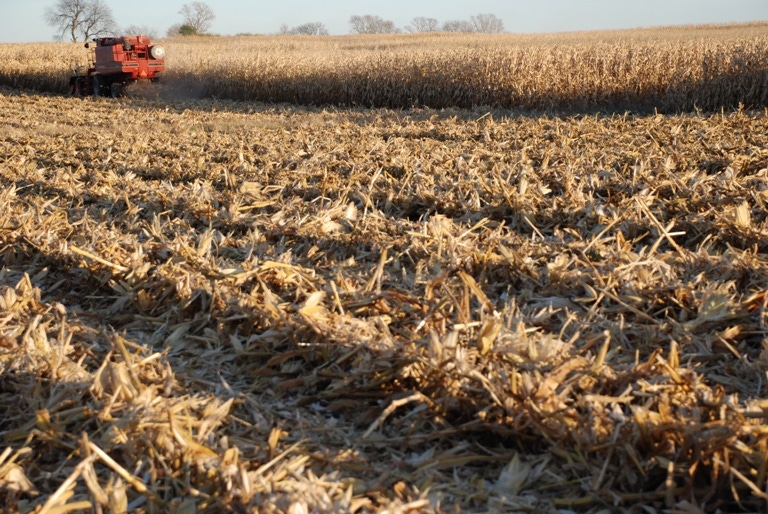October 25, 2013

For corn not yet harvested, the recent cool, wet weather has created concerns about the growth of molds and mycotoxins. Depending on the type of mold, this could have a significant impact on pork producers, says Bob Thaler, South Dakota State University (SDSU) Extension swine specialist.
“Producers need to keep a couple of things in mind. First, molds don't cause the problem for livestock. It’s the mycotoxins the molds produce that cause problems. Even if the corn is dried down after harvest to prevent any further mold growth, the mycotoxins that were initially on the corn in the field are still there and active,” Thaler says.
He further explains that not all mycotoxins cause problems for livestock. The ones that pork producers need to watch for in swine are aflatoxin, zearalenone, vomitoxin (also known as DON), fumonosins and T2.
Like what you’re reading? Subscribe to the National Hog Farmer Weekly Wrap Up newsletter and get the latest news delivered right to your inbox every week!
“With our current weather conditions, the main ones pork producers need to watch for are DON and zearalenone,” Thaler says.
DON does not cause health or reproductive problems, but Thaler says when the total concentration in the diet reaches 1 part per million (ppm), pigs will eat less feed. This decrease in feed intake will result in slower gains but not death.
“Zearalenone has estrogen-like effects and tends to cause problems in the breeding herd. It should be limited to 1 ppm in nursery diets, 2 ppm in sow and grower diets, and 3 ppm in finishing diets,” he says.
There are some commercial products available that bind aflatoxin, but they are not consistently effective in completely controlling DON or zearalenone. Therefore, Thaler says if a producer wants to use DON or zearalenone-contaminated grain, they'll need to blend it with "clean" grain to keep those levels in the complete feed below 1 ppm.
“For example, if the corn contains 2 ppm DON and it is included in the diet at 25% of the total ration, the final diet should only contain .5 ppm DON if the other ingredients are clean,” he says. “At this level, pig performance will not be affected. Also, they may want to consider adding a mold inhibitor to the corn they are storing on-farm. For producers with good quality “carry-over” corn, they should strategically feed that to their breeding herd and newly weaned animals, and use the poorer quality grains for older, market animals.
Sample grain
To properly blend mycotoxin-contaminated corn, Thaler says it is essential to know exactly how much mycotoxin and what type is in the grain. To properly sample your grain, take samples from several different locations in the bin or load, and then send them in a cloth bag to a certified lab for analysis.
Thaler recommends the North Dakota State University Diagnostic Lab (http://www.vdl.ndsu.edu/).
“It's an excellent lab with a great deal of mycotoxin experience in the region,” he says.
Once the sample results are in, blend the contaminated grain with clean grain and keep the diet’s mycotoxin level below the recommended level.
For more information, visit the Pork section on iGrow.org and look for the Extension fact sheet “Dealing with Mycotoxin-contaminated Feeds at Feeding Time,” (http://igrow.org/up/resources/02-2038-2012.pdf) or contact Thaler at (605) 688-5435 or [email protected]) or Ashley Gelderman, SDSU Extension swine field specialist at (605) 782-3290 or [email protected].
You might also like
Group Sow Housing Alternatives: Building New vs. Remodeling Existing Facilities
You May Also Like



